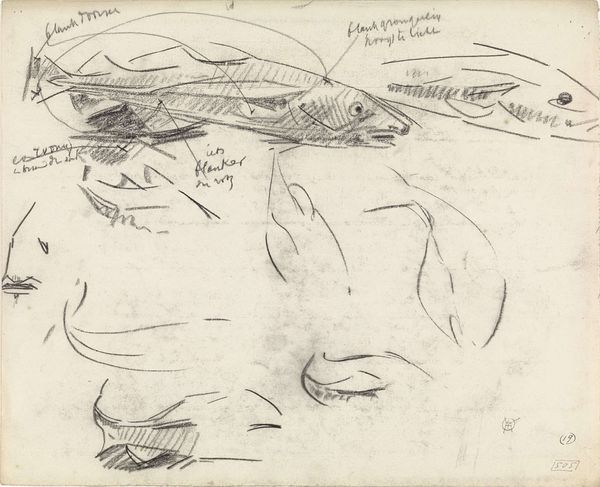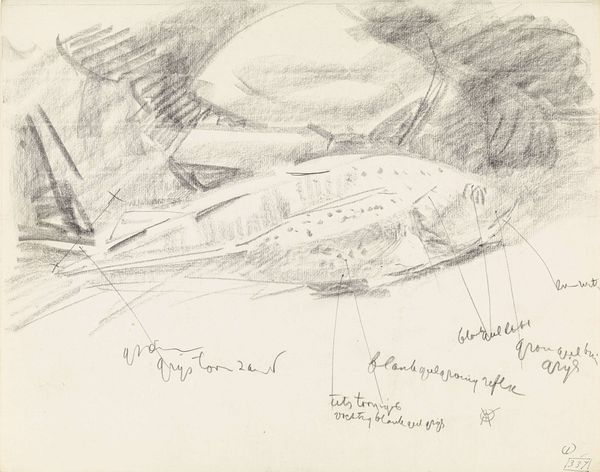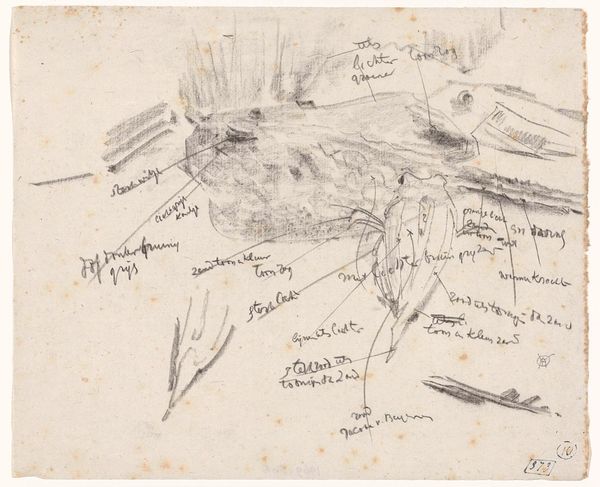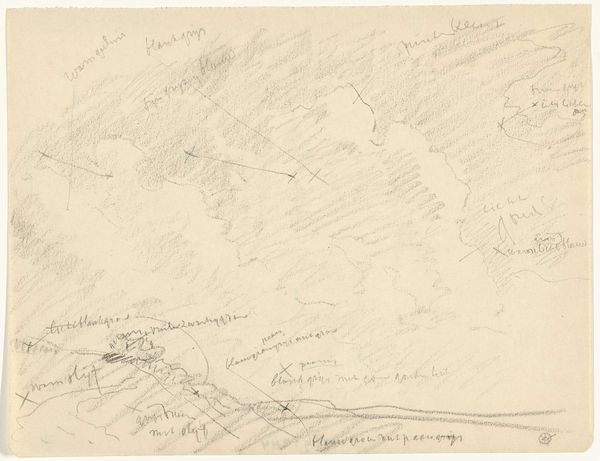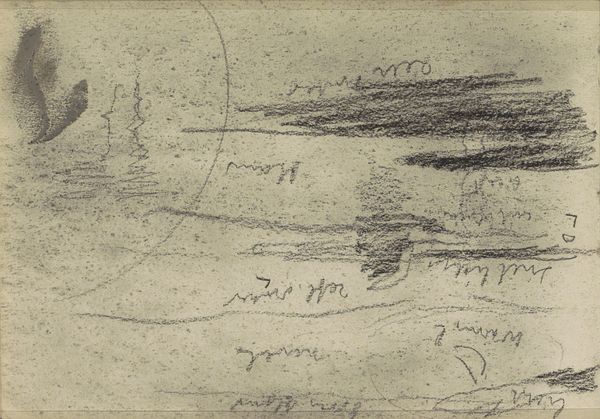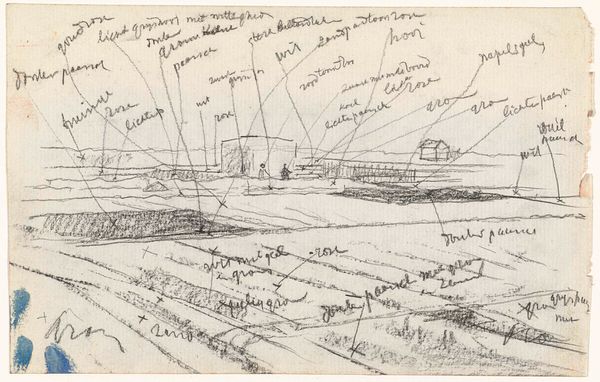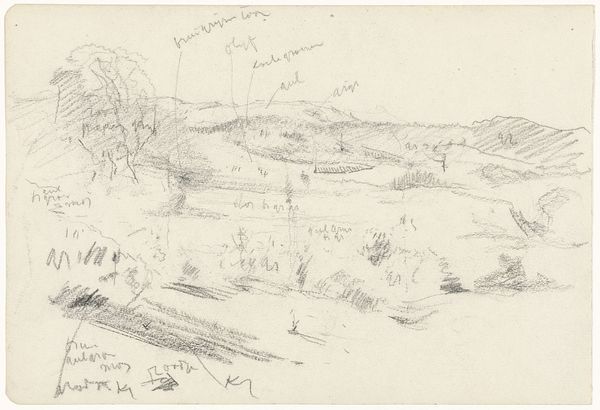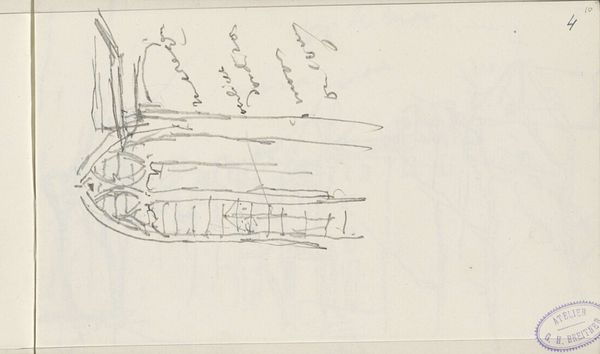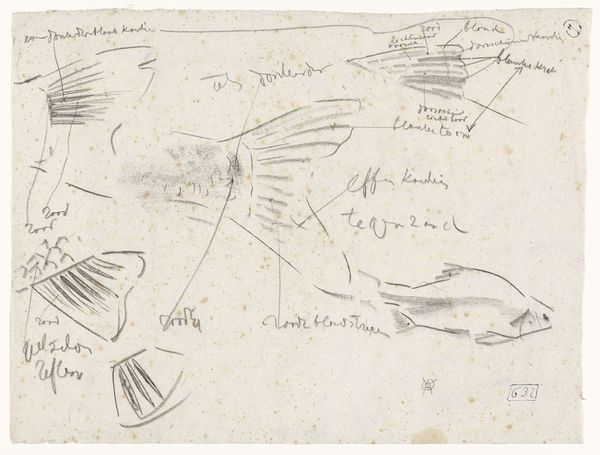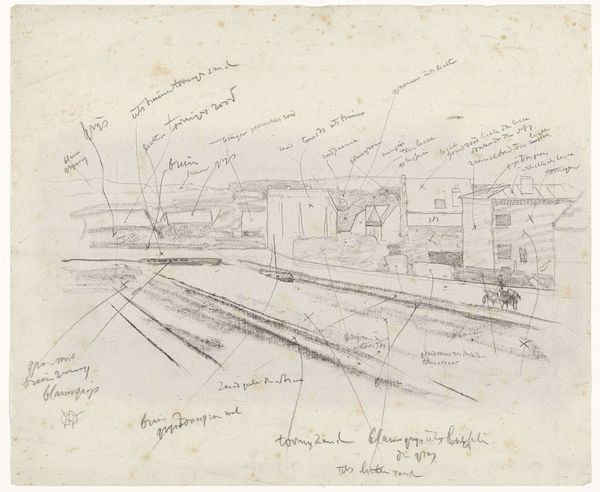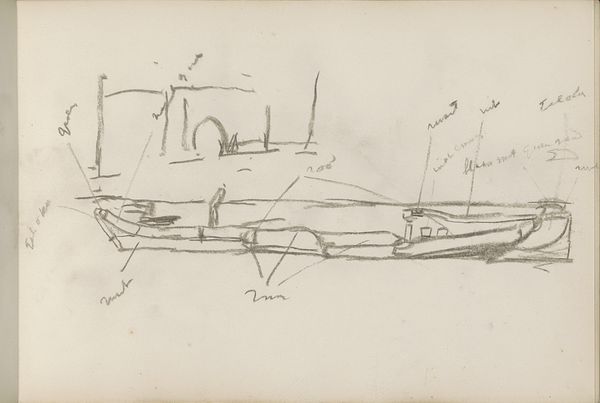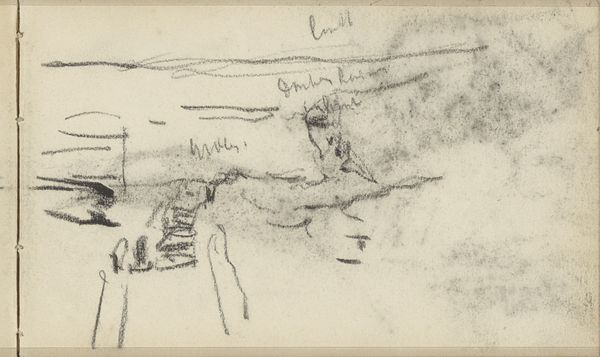
Dimensions: height 266 mm, width 334 mm
Copyright: Rijks Museum: Open Domain
Curator: Gerrit Willem Dijsselhof's sketch, "Achterstuk van een vis, met kleurnotities"—or "Tail Piece of a Fish, with Color Notes"—dates from between 1876 and 1924 and resides here at the Rijksmuseum. Editor: It strikes me as an incredibly fleeting, ephemeral moment captured. The almost frantic, delicate pencil strokes—it’s as though Dijsselhof was racing against time to record his observations. Curator: Indeed. Observe how Dijsselhof employs a range of graphite pencils to create varying tonal values. This is evident in the precise hatching used to articulate the fish's tail and how that contrasts with the suggestive annotation across the sketch. Note too that these annotations describing the hues imply he viewed colour not just as descriptive but intrinsic to form. Editor: It’s interesting to consider the materials used—pencil and paper—as readily available and relatively inexpensive. It emphasizes the accessibility of art-making itself. I’m drawn to thinking about what sort of access Dijsselhof had to these materials, and whether there's an exploration of the natural world linked with the social or economic landscape during its creation? The presence of a "sketch book" also situates it firmly within an intimate process. Curator: We can’t ignore, however, the arrangement. The tail is cropped and the accompanying notes frame it within the two-dimensional space. His choice to isolate this element directs our eye toward the detail—scale patterns, fin structure—transforming it into a formal study, an exercise in abstraction. It removes it from any conventional narrative and is not defined by a larger context, either socially or naturally. Editor: But surely those color notes – ‘brown green on grey ground,’ ‘blue even,’ – root this work back into the practical application of painting itself, into the labour of colour mixing, making pigments, and the knowledge required in representing a physical thing. I think they underscore a sense of production tied intimately to a craftsman-like interaction with his surrounding environment. Curator: I concede to a material function, but it would be a stretch to disregard how these choices of rendering, colour notations included, work towards more abstract artistic questions—exploring how observed data translate into form. It feels like more of a reduction, rather than a material celebration of natural colours. Editor: Ultimately, what we agree upon is that viewing Dijsselhof’s notations and marks can enrich an experience when studying color for practical making. Curator: Yes. A rare, but beautiful opportunity to experience both analysis and observation—in process!
Comments
No comments
Be the first to comment and join the conversation on the ultimate creative platform.
